22 Newmarket Street, Skipton, North Yorkshire, BD23 2HR
Built as an inn in c1800, this was originally known as The New Inn. Designed by the earl of Burlington, it was renamed The Devonshire Inn when the earl’s daughter married the Duke of Devonshire.
Prints and text about The Devonshire.
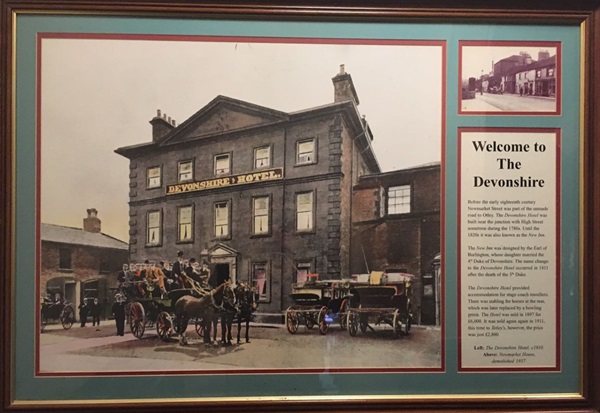
The text reads: Before the early eighteenth century, Newmarket Street was part of the unmade road to Otley. The Devonshire Hotel was built near the junction with High Street sometime during the 1780s. Until the 1820s it was also known as the New Inn.
The New Inn was designed by the Earl of Burlington, whose daughter married the 4th Duke of Devonshire. The name change to the Devonshire Hotel occurred in 1811 after the death of the 5th Duke.
The Devonshire Hotel provided accommodation for stage coach travellers. There was stabling for horses at the rear, which was later replaced by a bowling green. The Hotel was sold in 1897 for £6,000. It was sold again in 1911, this time to Tetley’s, however, the price was just £2,800.
Left: The Devonshire Hotel, c1910
Above: Newmarket House, demolished 1957.
A photograph and text about The Devonshire.
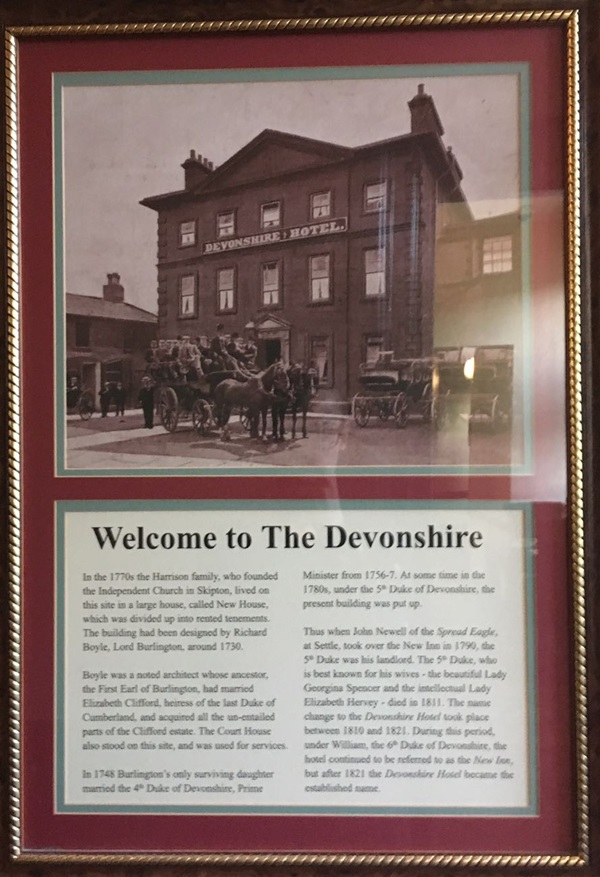
The text reads: In the 1770s the Harrison family, who founded the Independent Church in Skipton, lived on this site in a large house, called New House, which was divided up into rented tenements. The building had been designed by Richard Boyle, Lord Burlington, around 1730.
Boyle was a noted architect whose ancestor, the First Earl of Burlington, had married Elizabeth Clifford, heiress of the last Duke of Cumberland, and acquired all the un-entailed parts of the Clifford Estate. The Court House also stood on this site, and was used for services.
In 1748 Burlington’s only surviving daughter married the 4th Duke of Devonshire, Prime Minister from 1756-7. At some time in the 1780s, under the 5th Duke of Devonshire, the present building was put up.
Thus when John Newell of the Spread Eagle, at Settle, took over the New Inn in 1790, the 5th Duke was his landlord. The 5th Duke, who is best known for his wives – the beautiful Lady Georgina Spencer and the intellectual Lady Elizabeth Hervey – died in 1811. The name change to the Devonshire Hotel took place between 1810 and 1821. During this period under William the 6th Duke of Devonshire, the hotel continued to be referred to as the New Inn but after 1821 the Devonshire Hotel became the established name.
A photograph of Skipton’s factory workers.
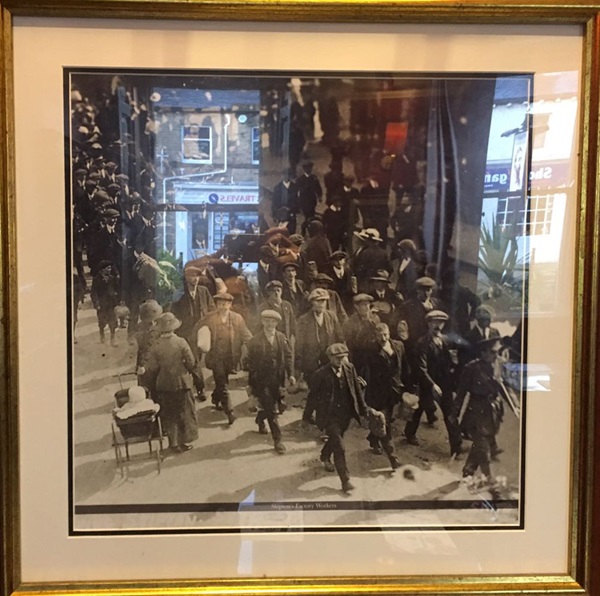
A photograph of Oakworth Village Morris Men (dancing at Stirton near Skipton).
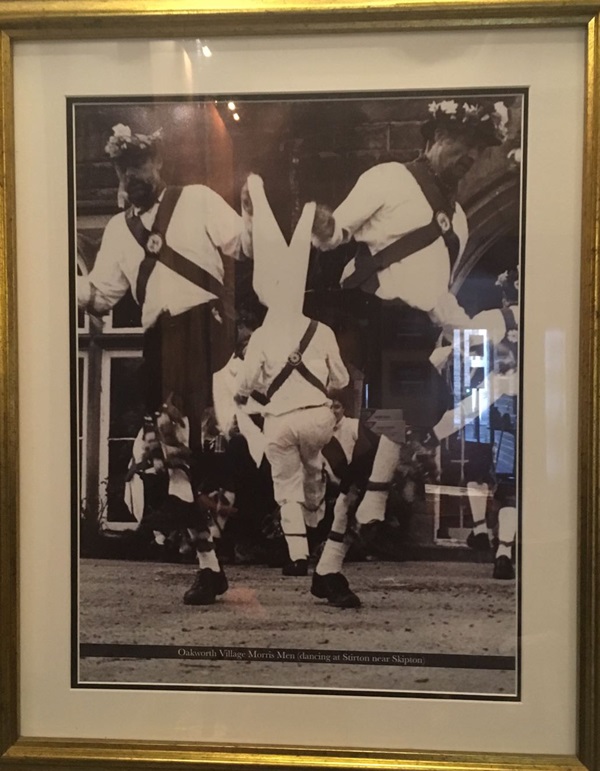
A photograph of Skipton from above.
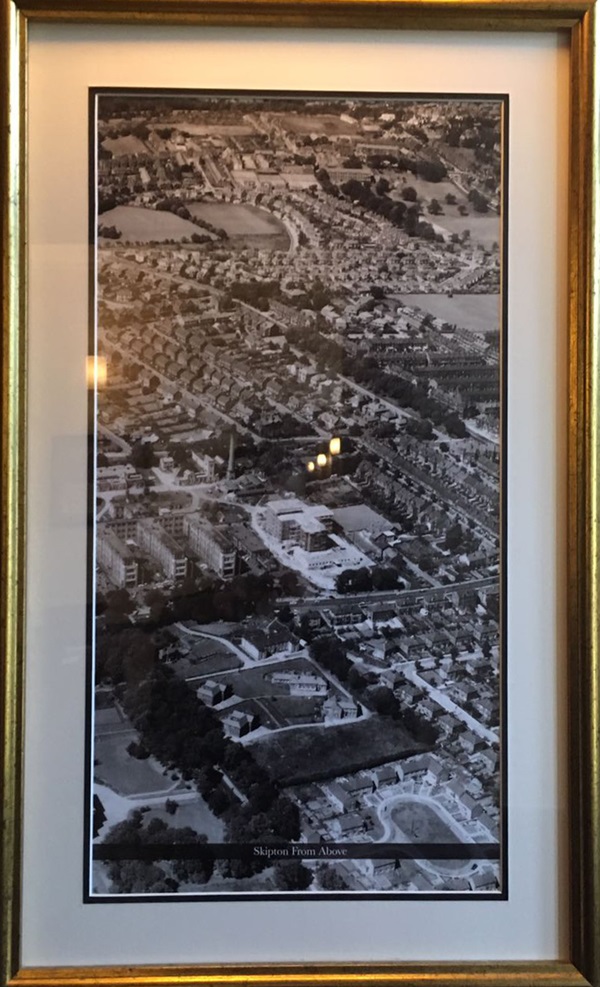
A photograph of the welcoming soldiers’ home parade, Skipton.
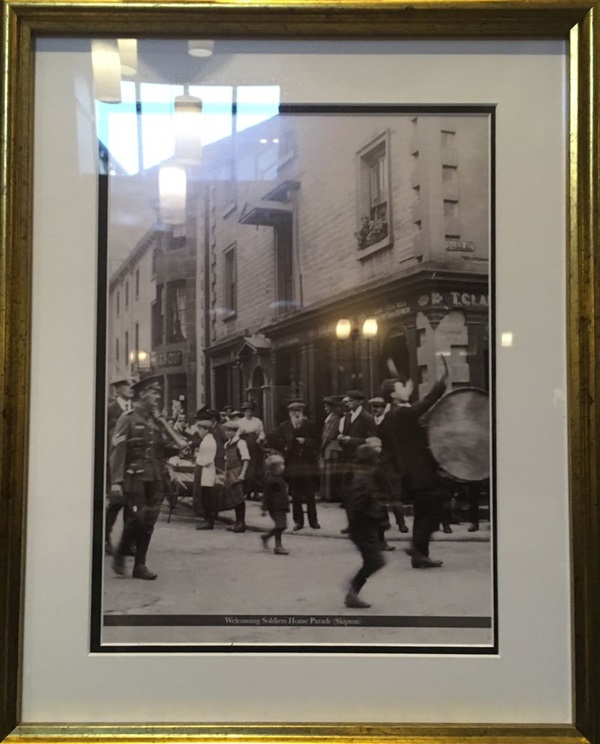
A photograph of Skipton Canal Lock maintenance team.
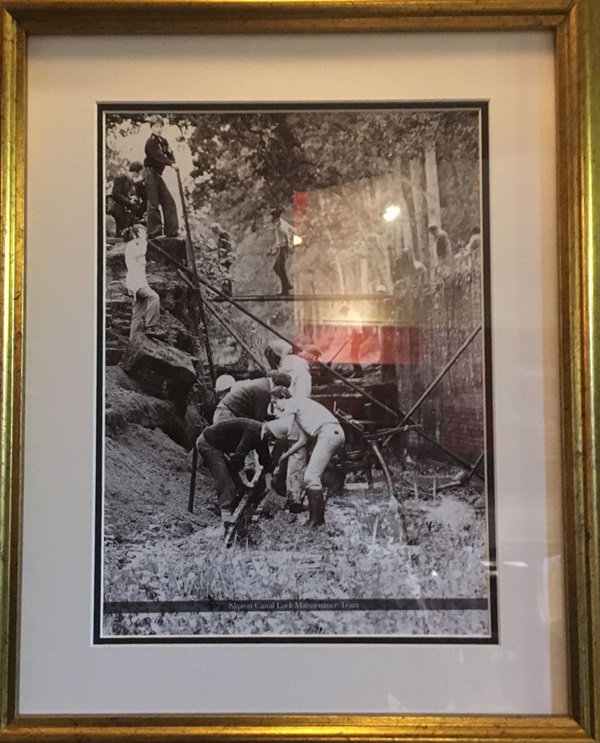
A photograph of High Street, c1900.
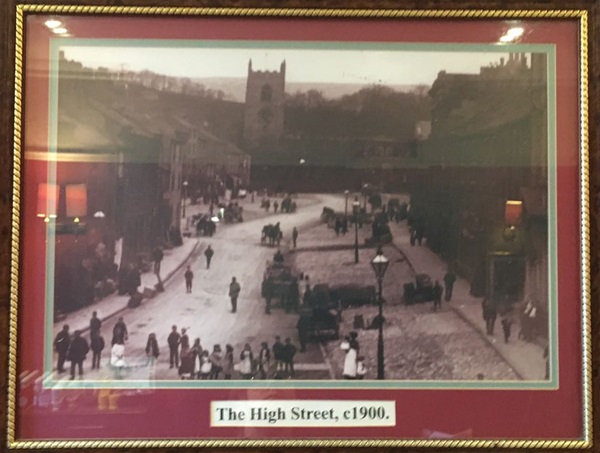
Photographs and text about Thomas Spencer.
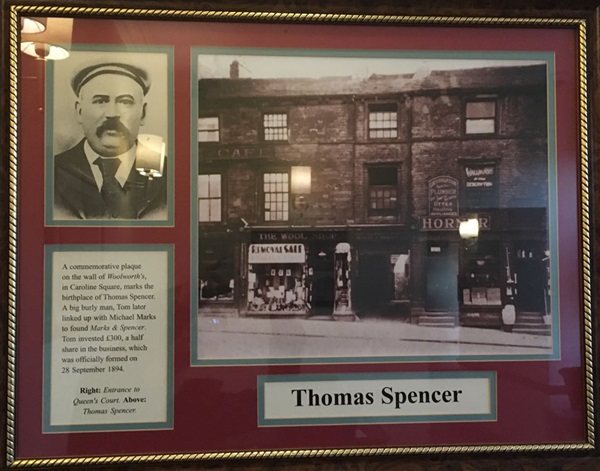
The text reads: A commemorative plaque on the wall of Woolworth’s in Caroline Square, marks the birthplace of Thomas Spencer. A big burly man, Tom later linked up with Michael Marks to found Marks & Spencer. Tom invested £300, a half share in the business, which was officially formed on 28 September 1894.
Right: Entrance to Queens Court
Above: Thomas Spencer.
Photographs and text about Skipton’s history.
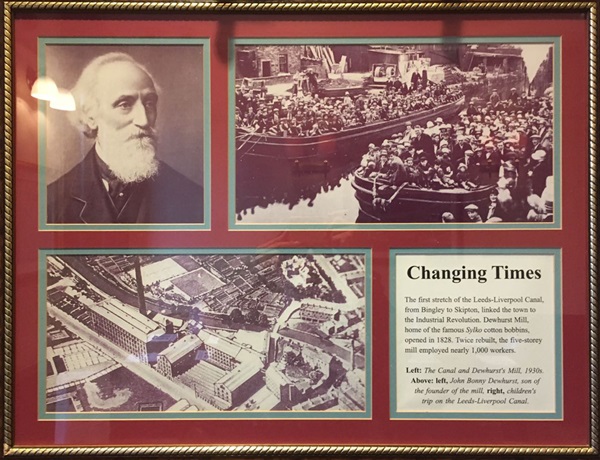
The text reads: The first stretch of the Leeds-Liverpool canal, from Bingley to Skipton, linked the town to the Industrial Revolution. Dewhurst Mill, home of the famous Syklo cotton bobbins, opened in 1828. Twice rebuilt, the five storey mill employed nearly 1,000 workers.
Left: The canal and Dewhurst’s Mill, 1930s.
Above: left, John Bonny Dewhurst, son of the founder of the mill, right, children’s trip on the Leeds-Liverpool canal.
Illustrations and text about Skipton as a market town.
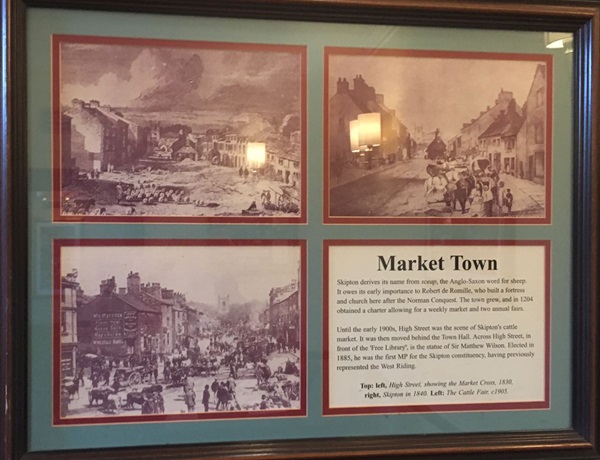
The text reads: Skipton derives its name from ‘sceap’, the Anglo-Saxon word for sheep. It owes its early importance to Robert de Romille, who built a fortress and church here after the Norman Conquest. The town grew, and in 1204 obtained a charter allowing for a weekly market and two annual fairs.
Until the early 1900s, High Street was the scene of Skipton’s cattle market. It was then moved behind the Town Hall. Across High Street, in front of the Free Library, is the statue of Sir Matthew Wilson. Elected in 1885, he was the first MP for the Skipton constituency, having previously represented the West Riding.
Top: left, High Street, showing the Market Cross, 1830
Right, Skipton in 1840
Left: The Cattle Fair, c1905.
A photograph of prisoners of war, Skipton Station.
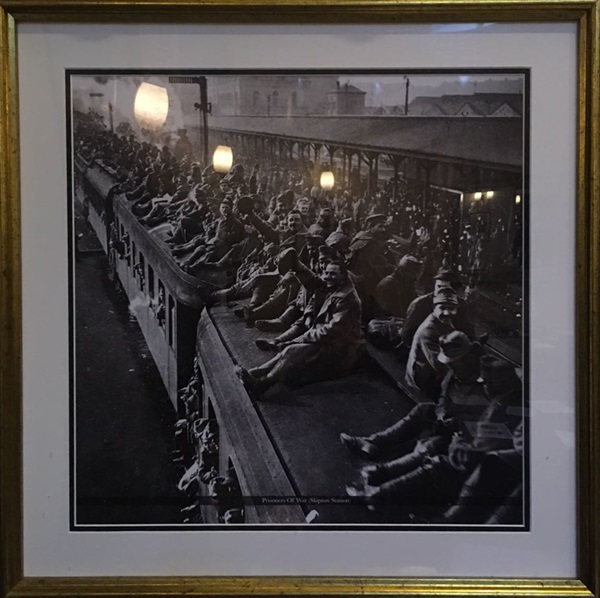
A photograph of Skipton Brass Band.
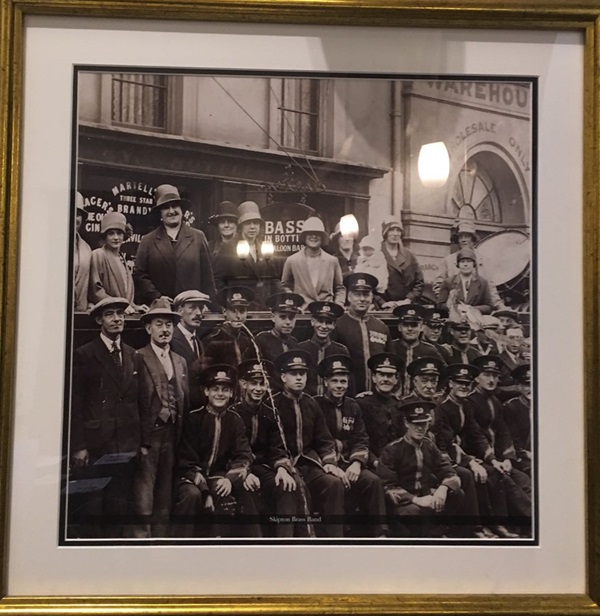
External photograph of the building – main entrance.
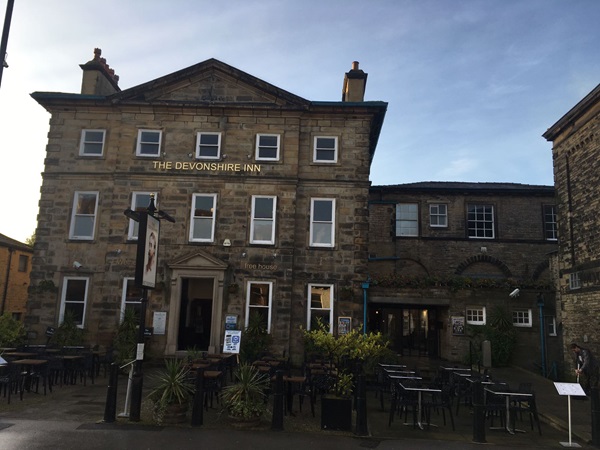
If you have information on the history of this pub, then we’d like you to share it with us. Please e-mail all information to: pubhistories@jdwetherspoon.co.uk